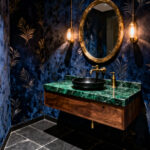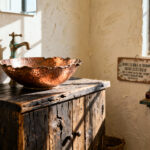As an interior designer celebrated for fusing Philadelphia’s rich history with modern design, I’m often asked how to incorporate farmhouse elements into contemporary homes. Farmhouse kitchens exude a warmth and comfort that families and entertainers adore. By blending the old with the new, you can craft a farmhouse kitchen that celebrates the past while serving a modern household.
In this post, I’ll share my favorite timeless farmhouse kitchen ideas that transform spaces from tired to inspired. These touches, from sinks to lighting, instill vintage rural charm while addressing a family’s needs. I’ll provide tips on executing these ideas in homes, old and new, helping you avoid common pitfalls. Read on for insights from my years as a designer to make your cherished kitchen both beautiful and livable.
Rustic Charm with Shiplap Walls
A farmhouse isn’t complete without shiplap walls. Those wide, horizontal wooden boards add texture and visual interest to kitchen walls. Traditional farmhouses used shiplap for structure and insulation. Today, shiplap offers rustic warmth and so much more.

The History Behind the Hype
Shiplap walls tie modern homes to America’s agricultural past. Builders cut flat boards in early farmhouses that overlapped slightly to sheath exterior walls. This protected interiors from wind and moisture while permitting airflow within walls to control humidity. As FHA loans expanded homeownership after World War II, the American love affair with shiplap took off.
By the 1990s, interior designers like myself discovered that shiplap beautifully showcases backsplashes, range hoods, and display shelving. Painted or natural wood shiplap warms up kitchens of all sizes. Distressed finishes and varied stain colors add dimension.
Making Magic with Modern Materials
While you can use reclaimed boards, today’s engineered wood materials recreate the rustic look with fewer issues. Use thick, pre-cut pine panels for an authentic look, or choose moisture-resistant MDF or plywood. Consider the shiplap’s height, too – it can draw the eyes up, making small kitchens appear more expansive.
High-quality, precision-milled shiplap installs cleanly. Butt boards tightly to prevent uneven lines, filling gaps as needed—prime panels before painting for a smooth surface that accepts color beautifully. For added texture, choose a matte or chalk paint for dimension.

Whether going for an airy cottage or cozy farmstead feel, a neutral backdrop allows pops of color to shine. Mix white shiplap with a deep green island for a fresh yet homey look. Or pair crisp black window trim with soft gray shiplap to create a modern farmhouse scheme.
Farmhouse Sinks for Hardworking Kitchens
Loved for their generous size, sloped walls, and charming aprons, farmhouse sinks are must-haves for kitchen upgrades. Their vintage feel warms the room visually while keeping the chef happy. Farmhouse sinks aren’t just pretty – they’re made for getting dirty. A good farmhouse sink becomes the kitchen’s hardest-working player, from soaking pots to bathing babies.
Standing the Test of Time
Like barn doors and subway tiles, farmhouse sinks are here to stay. These humble workhorses originated in rural America over a century ago. Traditional models boasted deep basins handcrafted from soapstone, cast iron, or fireclay. Early sinks showcased elegantly flared sides and extended front aprons. By the 1990s, I saw apron-front sinks gain popularity in urban homes seeking old-fashioned warmth. Today’s various durable, affordable options make farmhouse sinks accessible for all.
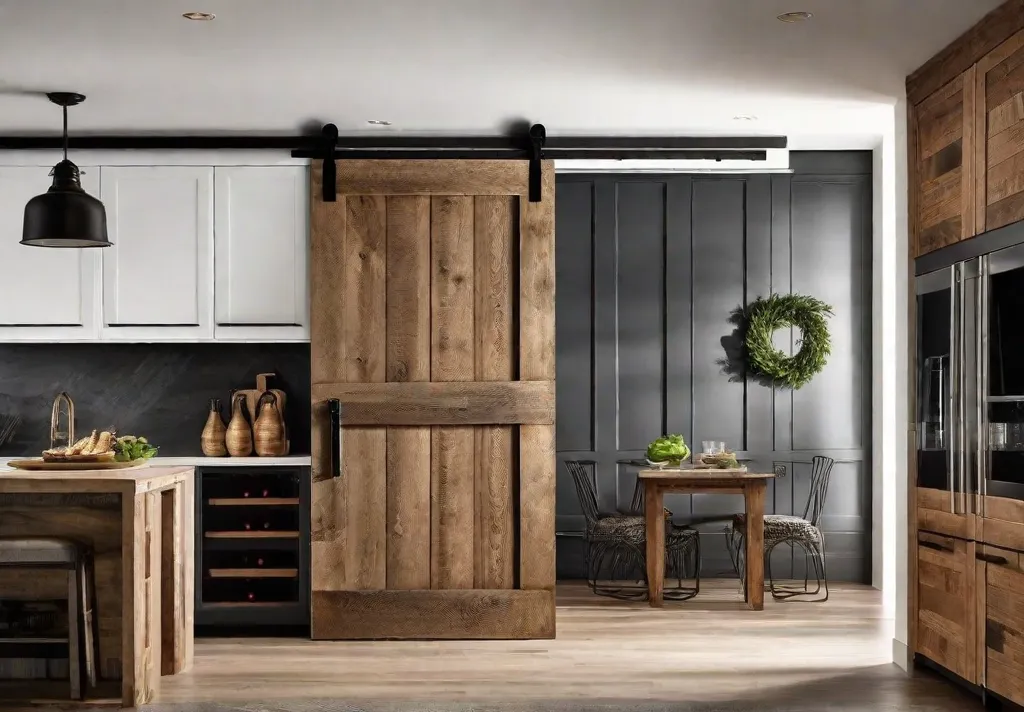
Choosing the Perfect Farmhouse Sink
When picking the perfect vintage-style sink, consider your family’s needs first. Opt for a spacious 36-inch sink if baking, canning, or crafting are your hobbies. Stainless steel is affordable and durable, making it ideal for families. Seek enameled cast-iron or fireclay sinks if you aim for authenticity; both age beautifully. Undermount sinks save counter space, while charming apron fronts hide the plumbing. In small kitchens, choose a compact model or a reasonable 33-inch size.
Choose a sink style that melds beautifully with your cabinets and backsplash. For contemporary schemes, try a streamlined fireclay sink in crisp white. For exposed luxury, choose stainless steel with industrial fixtures. Opt for warm wood countertops to contrast with cool porcelain.
Open Shelving for Display
Among my favorite farmhouse features, open shelving epitomizes rustic practicality and charm. Sturdy shelves lined with heirloom dishes warm this Philadelphia designer’s heart! Open shelving first gained fame in log-cabin kitchens that emphasized function over form. Today, I specify open shelving to add a homey style to new and old kitchens. Besides offering breezy display space, open shelves contribute to a kitchen layout’s fluidity. They expand counters and cabinets for storage while increasing airflow and light.
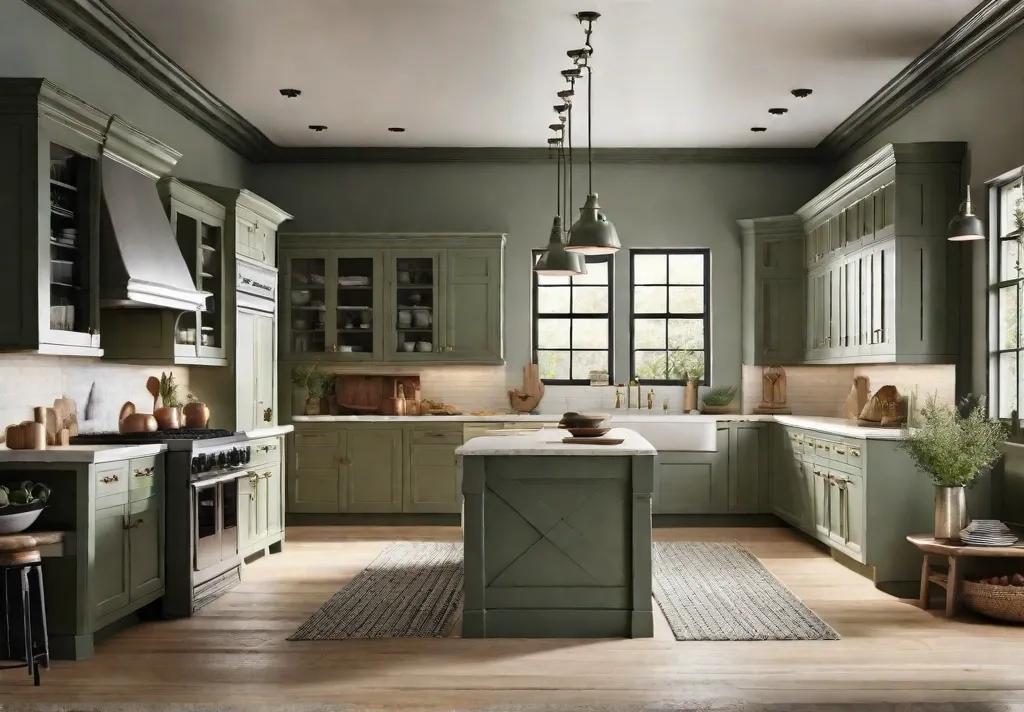
From Cabins to Suburbia
Open shelving traces its roots to American homesteads erected hastily from available wood. Crude shelves store necessities within easy reach, keeping items visible and surfaces clutter-free. By the late 1800s, shelf supports and placement improved. As kitchens evolved, closed storage arose, signaling middle-class sensibilities. By the 20th century, shelves showcasing collectibles mirrored more disposable income.
When contemporary kitchen aesthetics emerged in the 1930s, open designs returned. Soon, I and other designers blended metal pipes, reclaimed wood, and sleek consoles to create one-of-a-kind shelving that enhanced modern farmhouse spaces.
Creating Display Destinations
Open shelving makes kitchens highly livable – it’s all about curating display! For rustic warmth, choose solid oak or pine boards with hand-forged brackets. Paint colors tying into cabinetry keep schemes cohesive. Or break tradition with matte black powder-coated steel and brass for an appealing contrast.
Remember to leave breathing room between shelves – 10 to 12 inches typically suffices. Sturdy brackets rated for 100 pounds or more keep prized plates safely perched. Consider lighting to highlight particular pieces; pendants work beautifully. Most importantly, consider traffic flow when planning shelf placement. Open designs make kitchen tools readily available, so mind potential accidents in high-traffic areas.
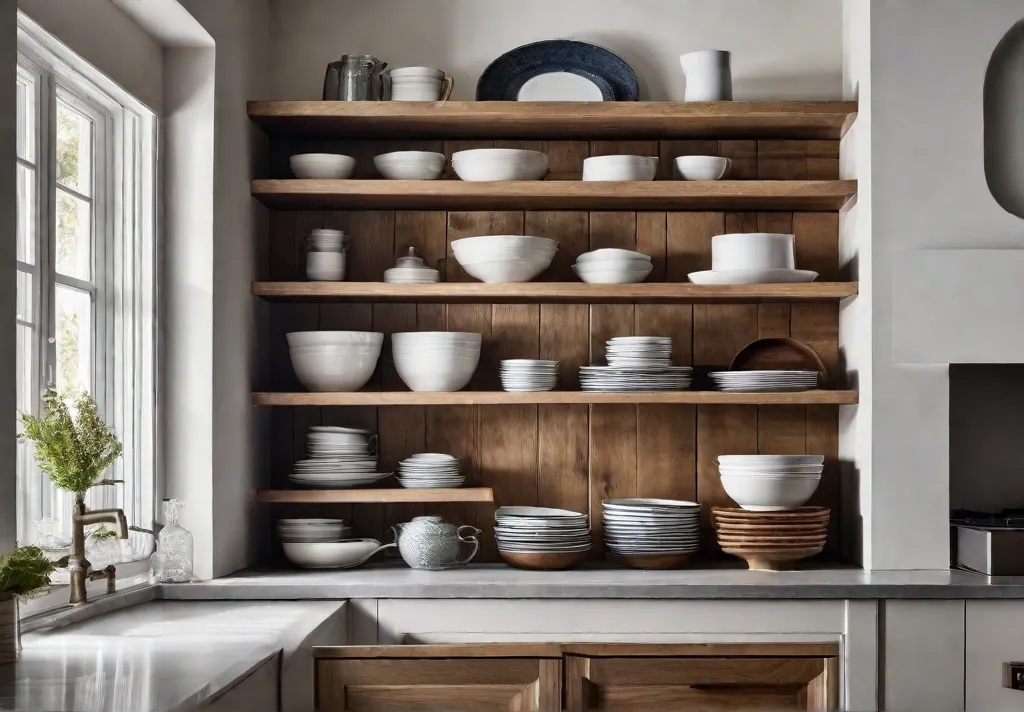
Energy-Efficient Farmhouse Lighting
Lighting makes a kitchen shine, but determining which fits best is challenging with so many options. Vintage-style fixtures warm farmhouse schemes beautifully while meeting code and saving energy. As an eco-conscious designer, I’m thrilled at the progress towards energy efficiency while maintaining farmhouse authenticity. Many manufacturers now offer greener directional lighting that is perfect for task, ambient, and accent needs. Let’s explore how lighting makes old-fashioned kitchens highly functional.
Looking Back at Kitchen Lighting
Early American farms relied solely on daylight through small windows to conserve warmth. Candles and oil lanterns were used sparingly and primarily portable. By the mid-1800s, gas lamps emerged, permitting more flexible lighting. Turn-of-the-century homes introduced electricity but focused mainly on task lighting over sinks and stoves.
By the 1920s, manufacturers offered energy-efficient farmhouse lighting options. However, fixtures remained secondary to architecture in illuminating kitchen tasks. Open kitchens benefited most from ambient daylight. Today’s options balance vintage styling with ample, directed light for kitchen duties once we turn off the sun.

Choosing Complementary Farmhouse Fixtures
Thankfully, farmhouse lighting evolved tremendously while retaining its vintage spirit! Flush mount fixtures spread ample light and work wonders over sinks. Double-globed pendants illuminate dining nooks charmingly. For task lighting, articulating arms now directionally focus LED bulbs.
Select visible bulbs resembling Edison’s iconic filament design; modern LEDs recreate the vintage look with energy efficiency. Or hide wires altogether for cleaner appearances. Seek fixtures passing dark sky compliance and EPA standards for making sustainable choices whether you prefer brass, copper, nickel, or iron, quality metals, and patina appealingly.
By combining the right mix of ambient, task, and accent lighting, your kitchen stays inviting and highly functional. Always consider lighting design holistically – factor in windows, surfaces, tasks performed, and aesthetics for the most pleasing results. If designing a kitchen yourself seems daunting, contact a professional.
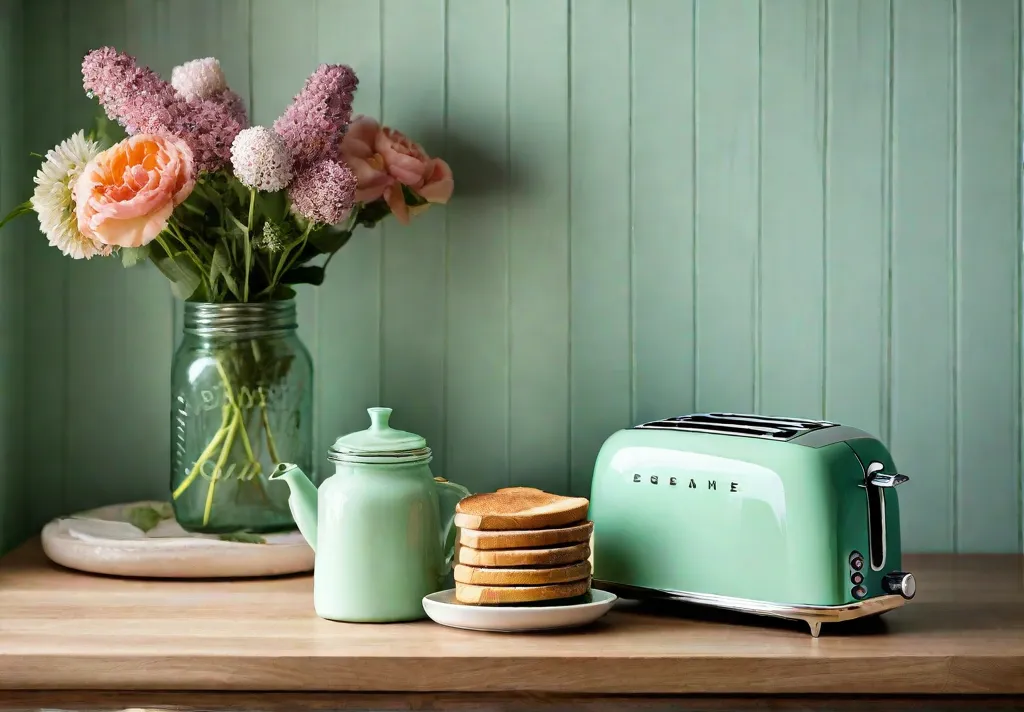
FAQs About Incorporating Farmhouse Touches
What are the defining characteristics or benefits of farmhouse kitchen designs in home decor?
Farmhouse kitchens emphasize durable, functional spaces conducive to gathering, cooking, and reconnecting with nature’s warmth. Rustic elements add cozy charm and endless design possibilities for personalization, too.
How does the timeless farmhouse style influence modern kitchen trends?
The farmhouse design’s focus on eco-friendly building materials and energy-efficient lighting complements today’s green movement. Airy, open plans also mirror current preferences for less segmented, more fluid living.
What are common challenges when blending farmhouse and contemporary kitchen elements?
Attaining balance poses the main challenge. Modern kitchens emphasize sleek, unified schemes, which farmhouse elements can disrupt if proportions feel off. Mind traffic flow and durability concerns when incorporating vintage pieces in high-use areas. Consider working with a professional designer to overcome common pitfalls.
Which popular regional variations of farmhouse style should I consider?
French farmhouse interiors incorporate more elegant chandeliers, florals, and stained glass for a romantic feel. The English cottage and Scandinavian farmhouse styles feature ample painted wood tones and a lighter look. Each regional farmhouse variation uniquely utilizes color, architectural details, and decorative accents to design personalized, welcoming kitchens.
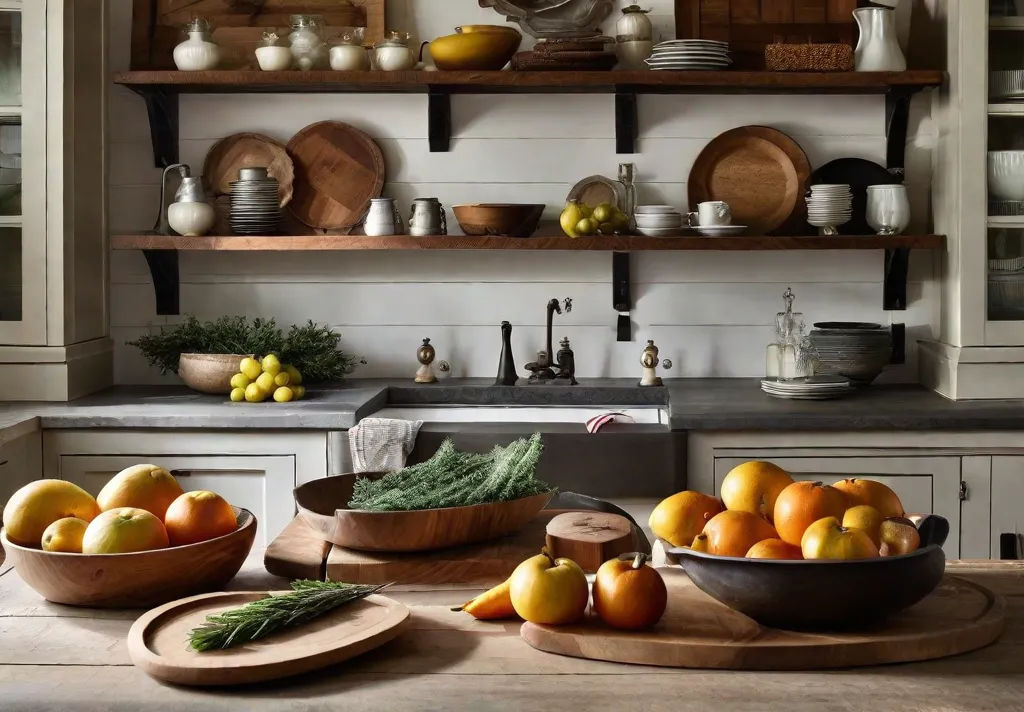
Bringing Farmhouse Warmth Home
America’s rich agricultural history instilled in us a longing for a simple life filled with hearty food, enduring craftsmanship, and communal spaces. Farmhouse kitchens encapsulate these enduring ideals wonderfully. By thoughtfully incorporating vintage sinks, open shelving, quality lighting, and rustic finishes suited to your home, you, too, can craft a kitchen with timeless soul and purpose.
Through sharing my experience as a designer blending old and new, I hope I’ve revealed ways for you to honor heritage while cooking comfortably. Farmhouse kitchens developed from necessity and availability of materials into genuinely livable, eco-friendly spaces. Their transformational capacity still awes and inspires me daily.
If you found these classic farmhouse kitchen ideas helpful, stay tuned for my next post on creating a seamless indoor-outdoor living experience. And as always, please share your beautiful kitchen transformations with me! I can’t wait to see the creative ways you implement these tips to bring family and friends together joyfully.

